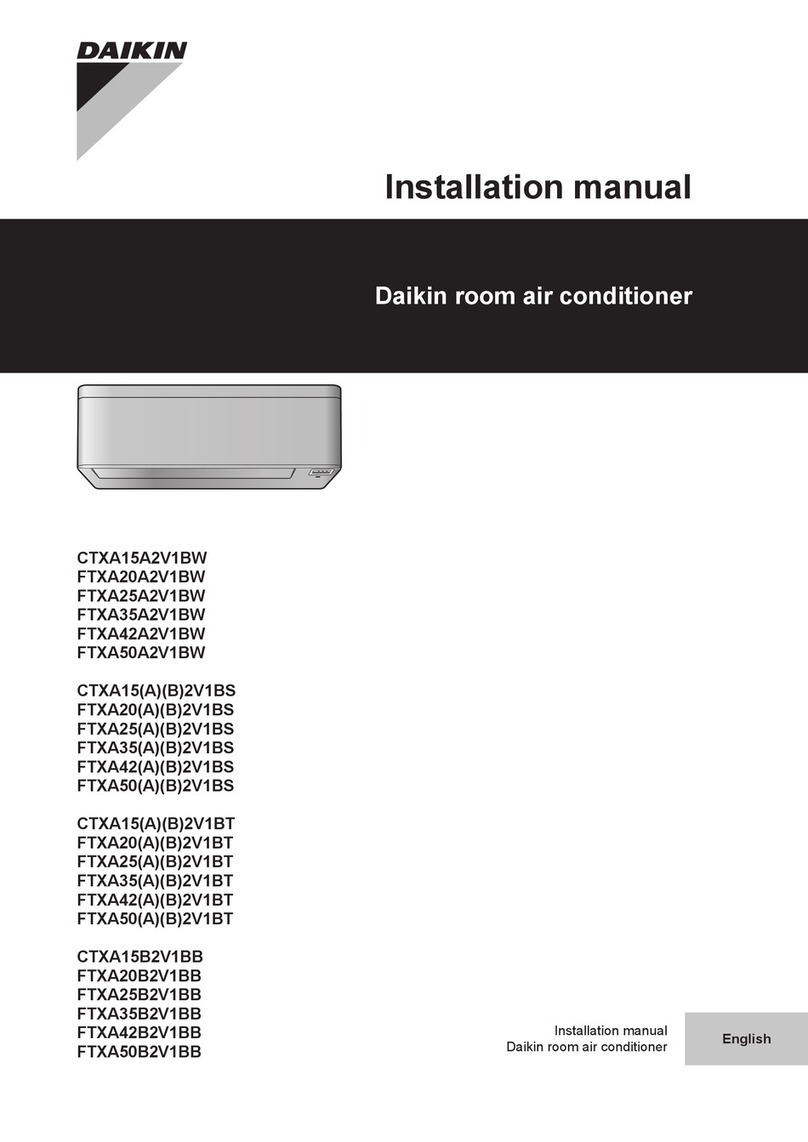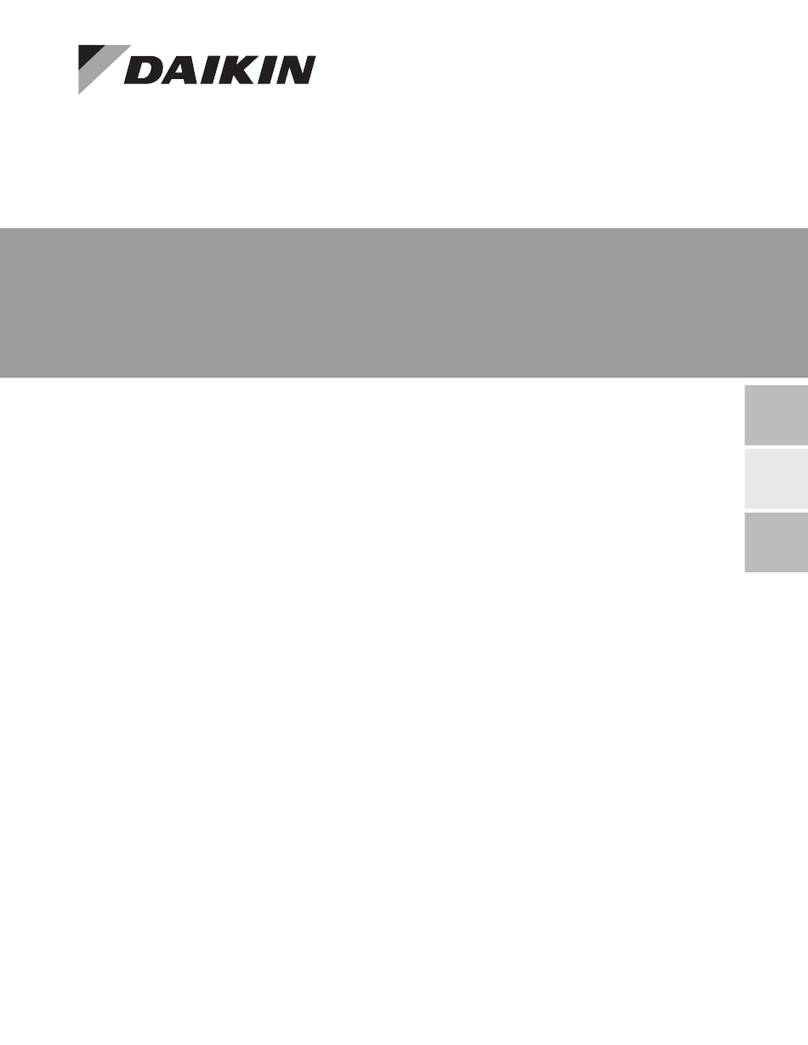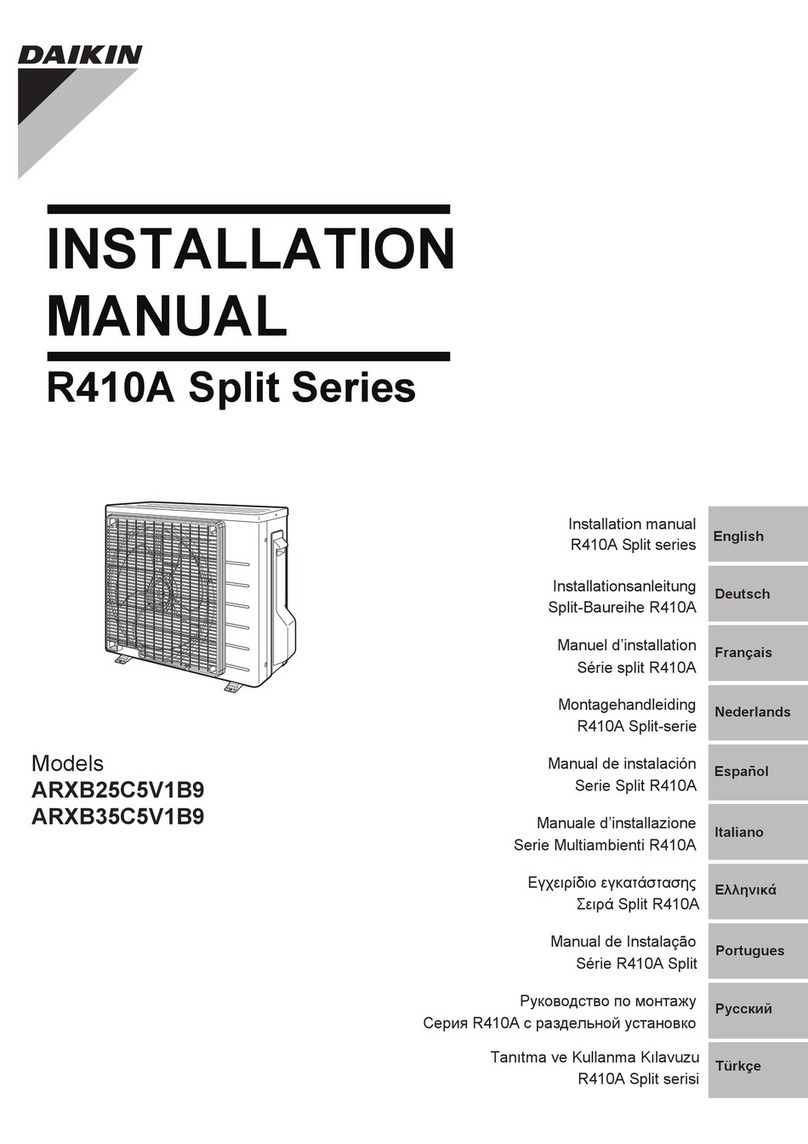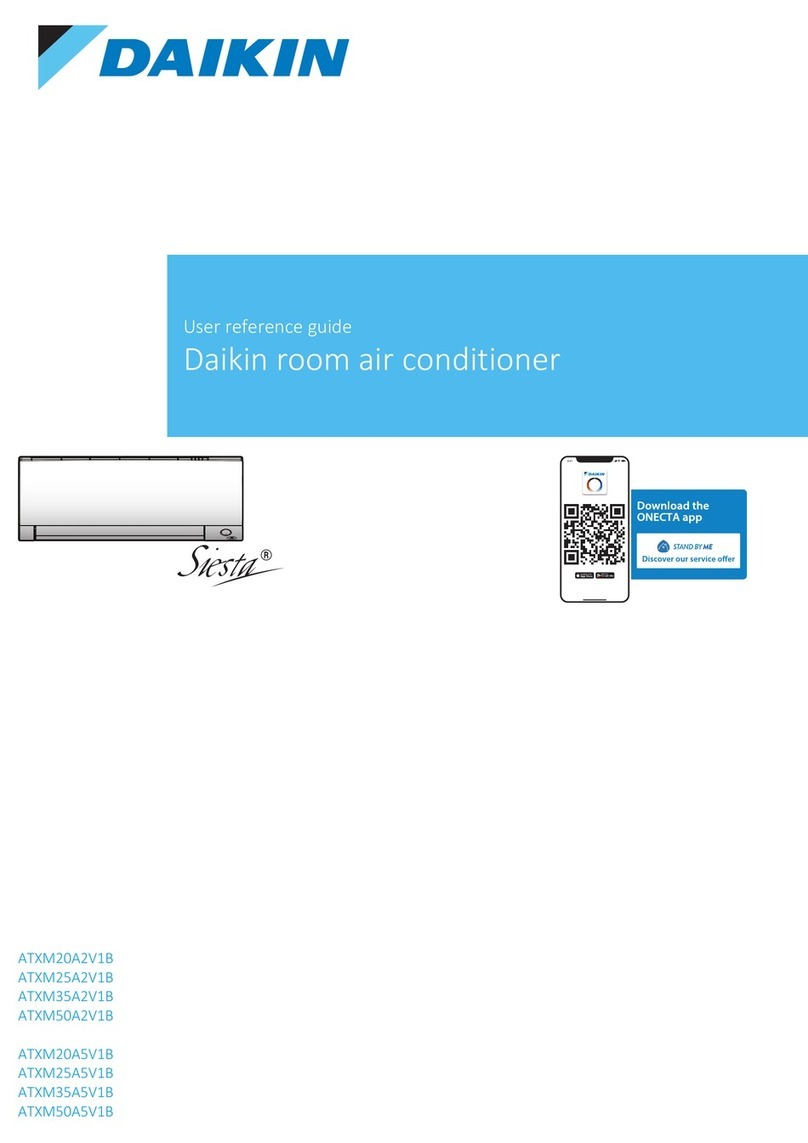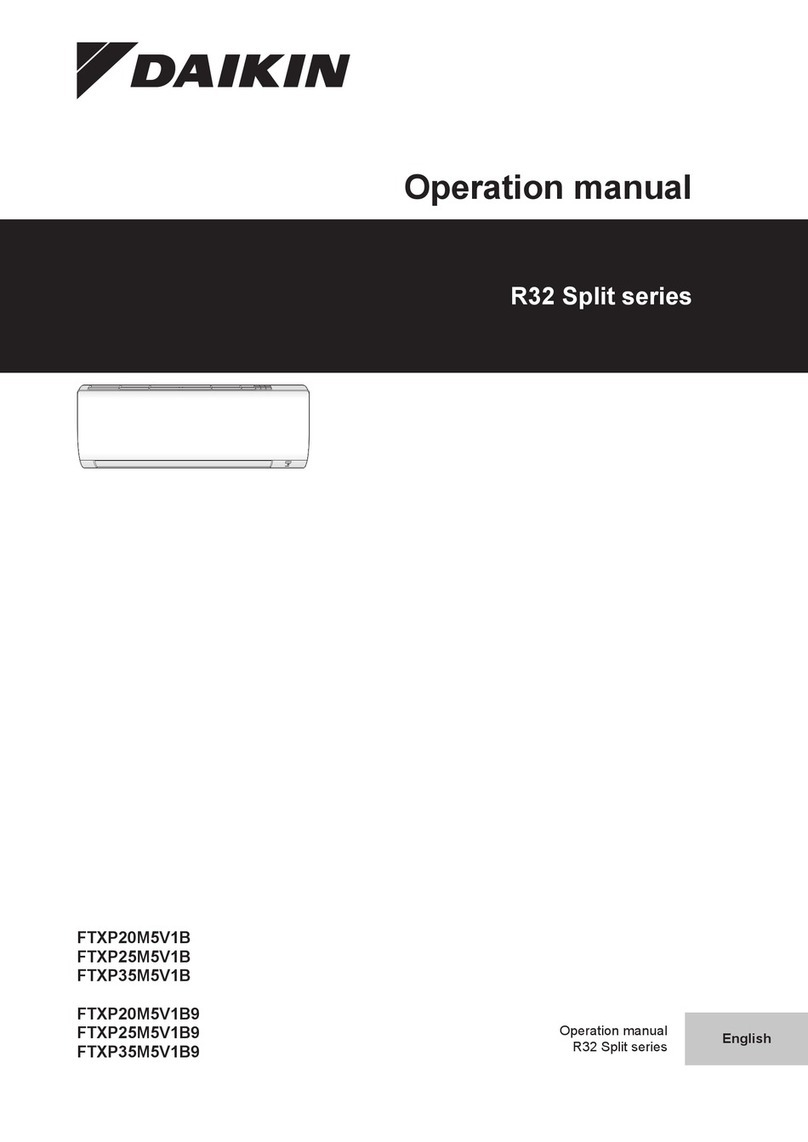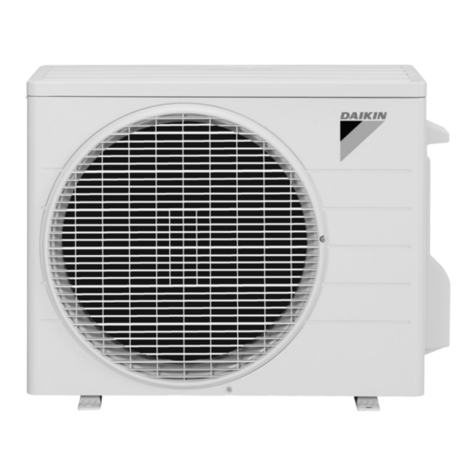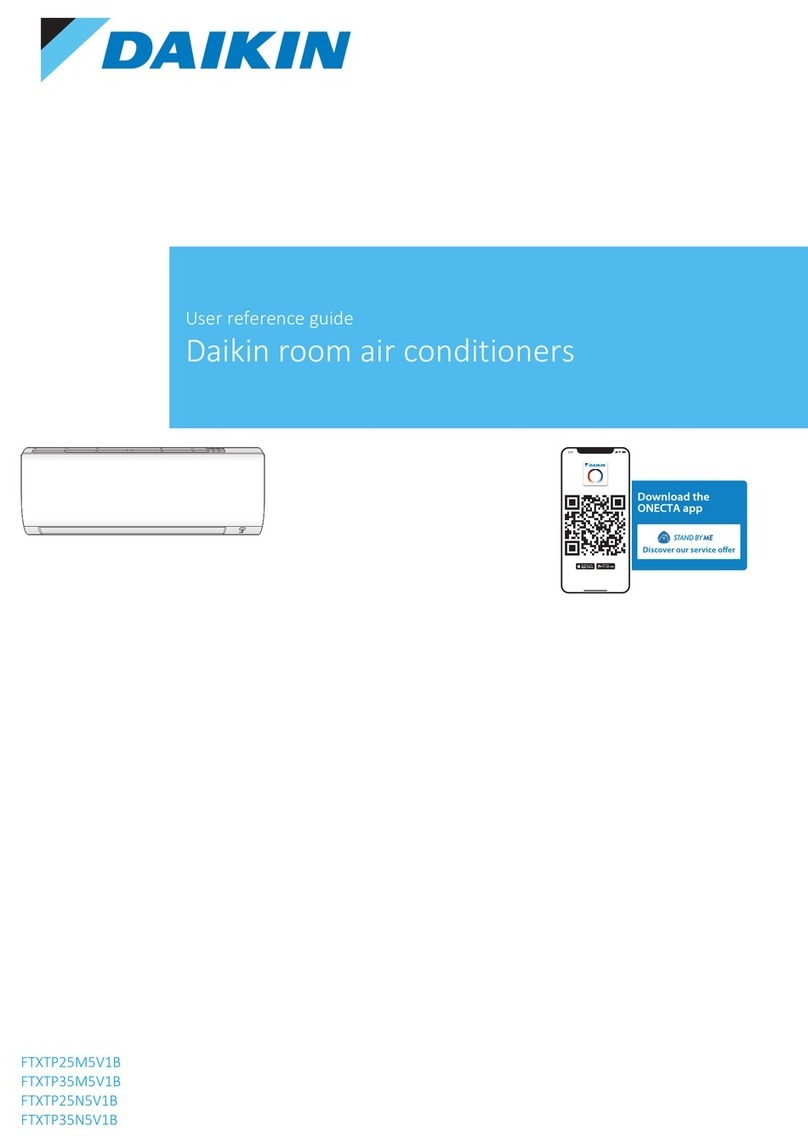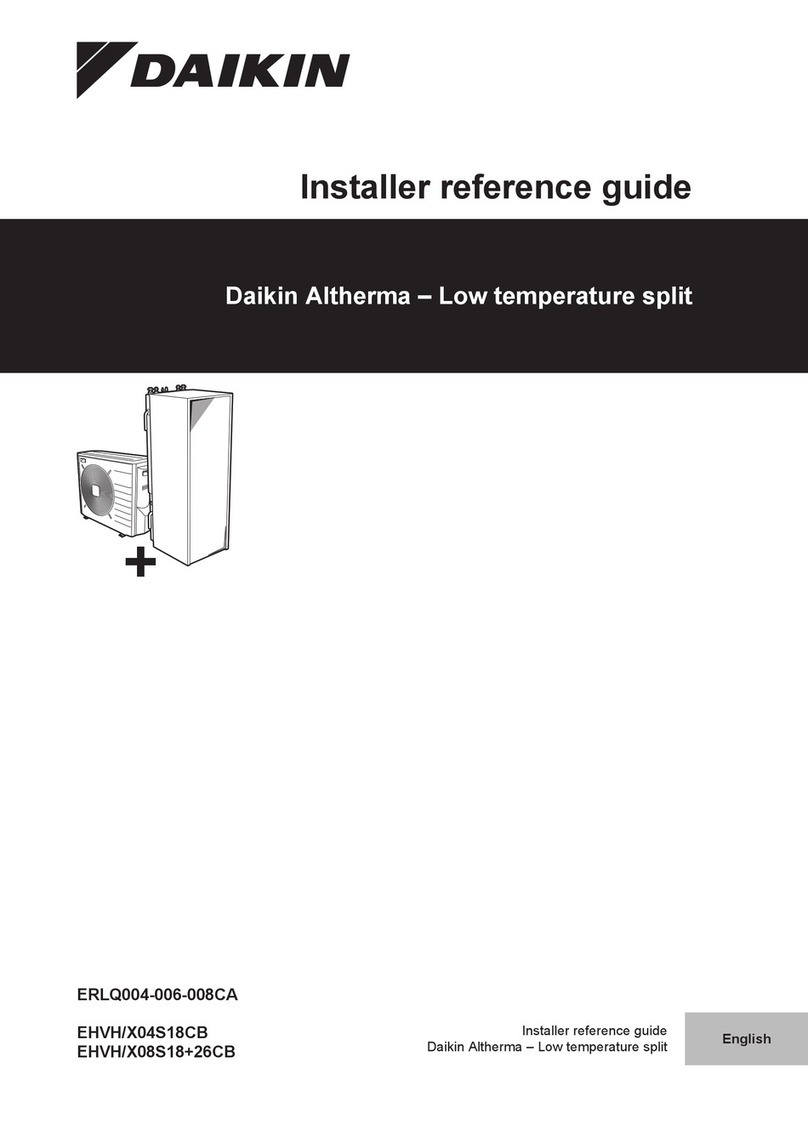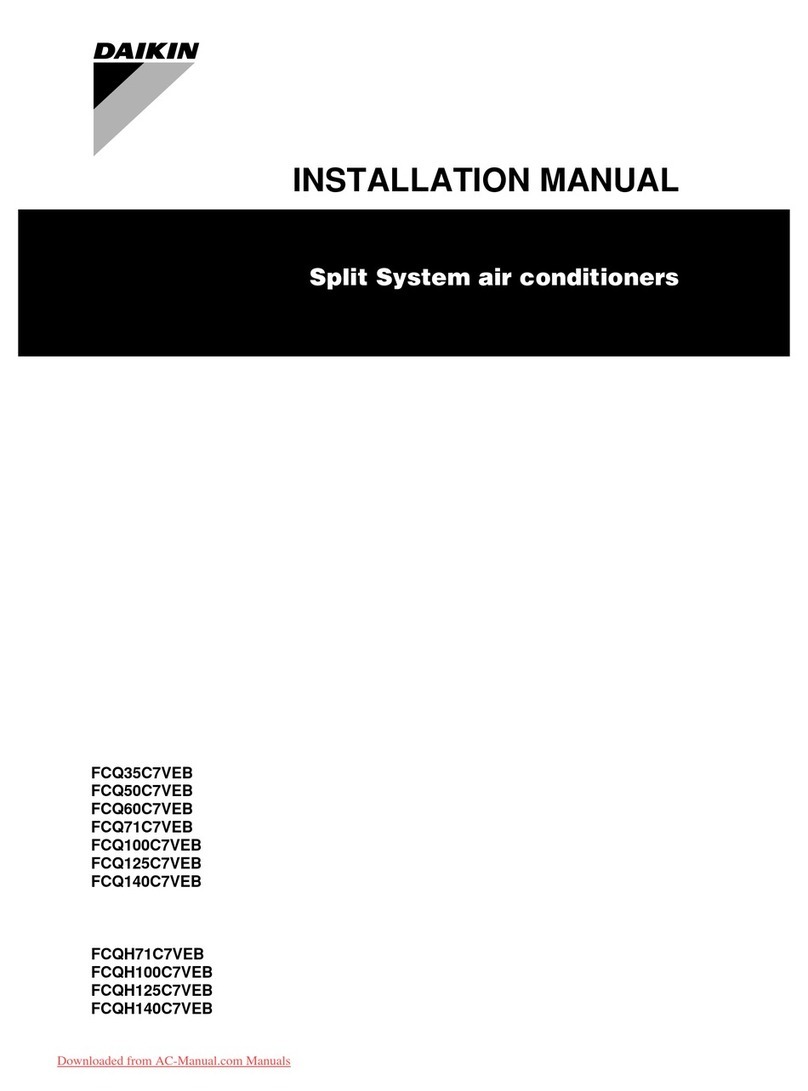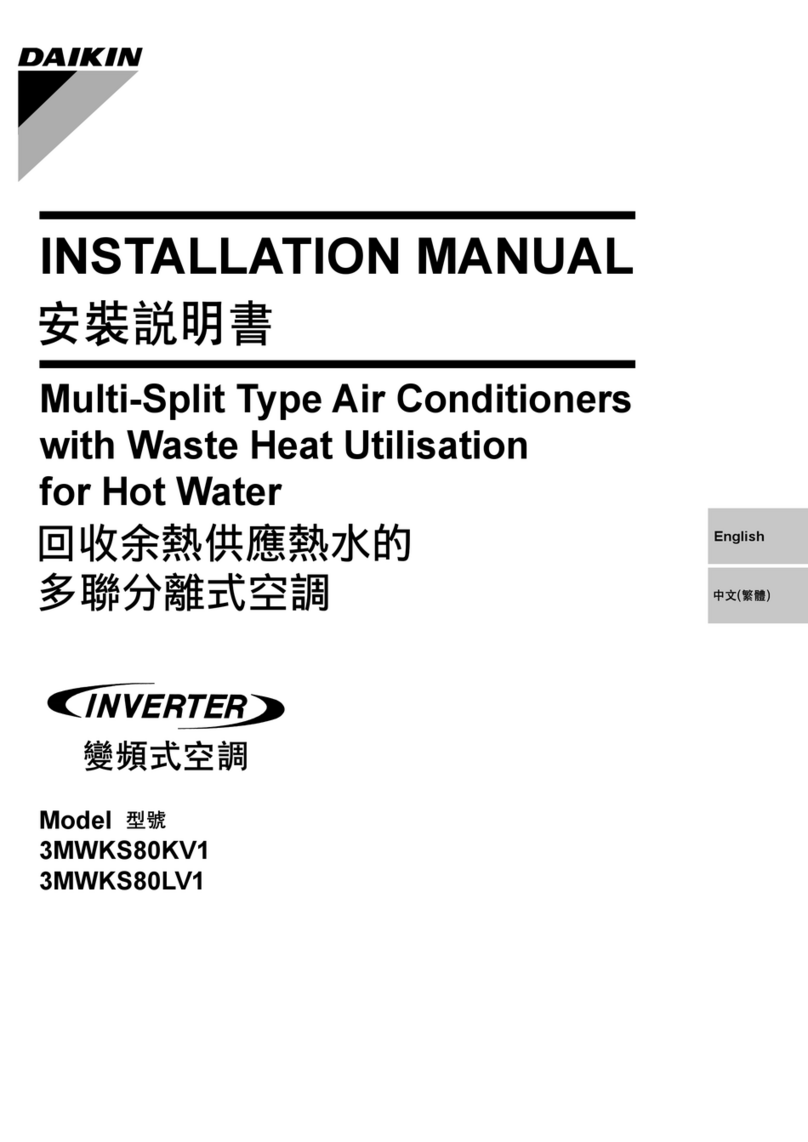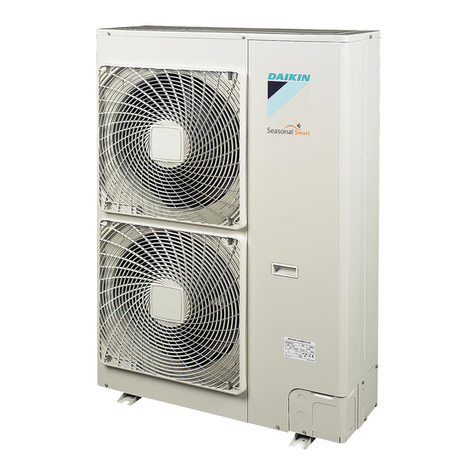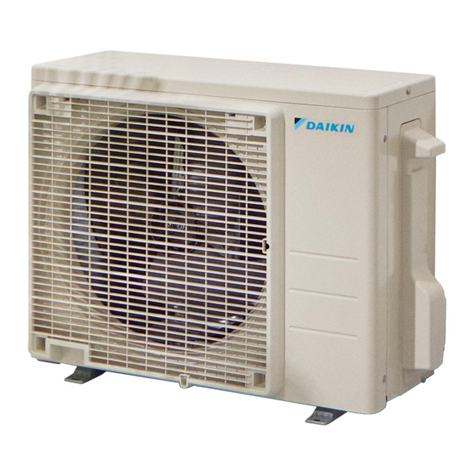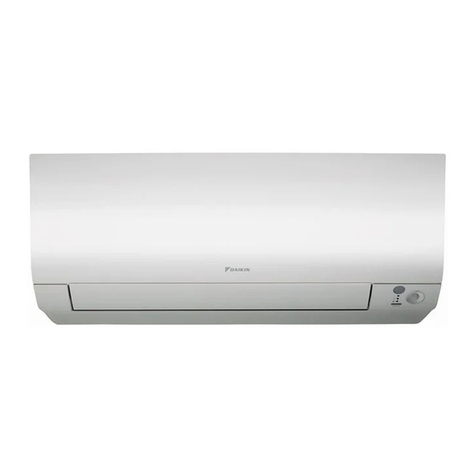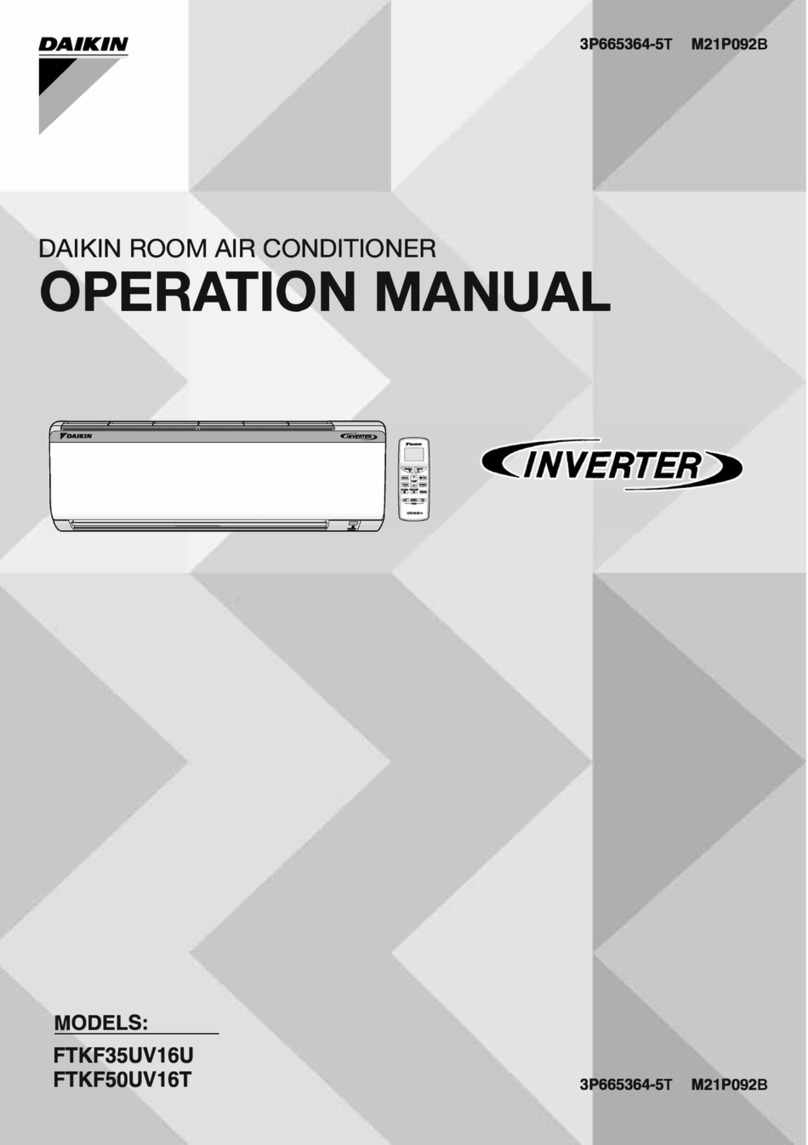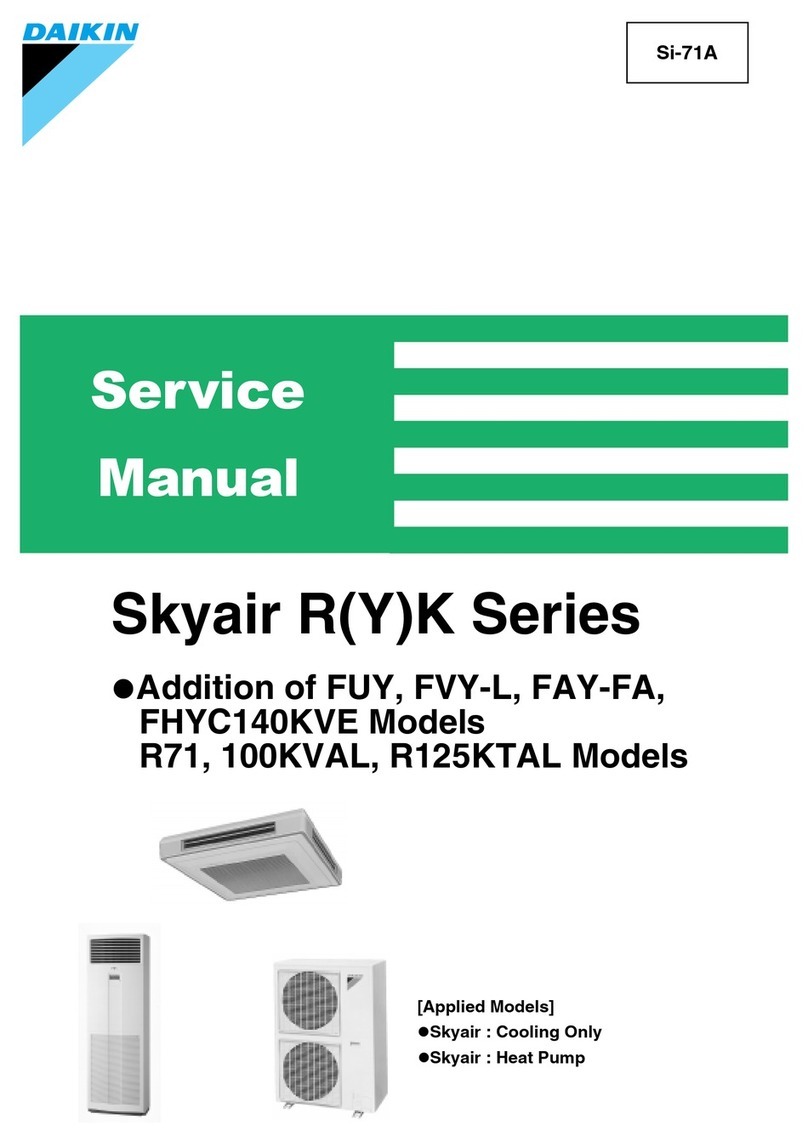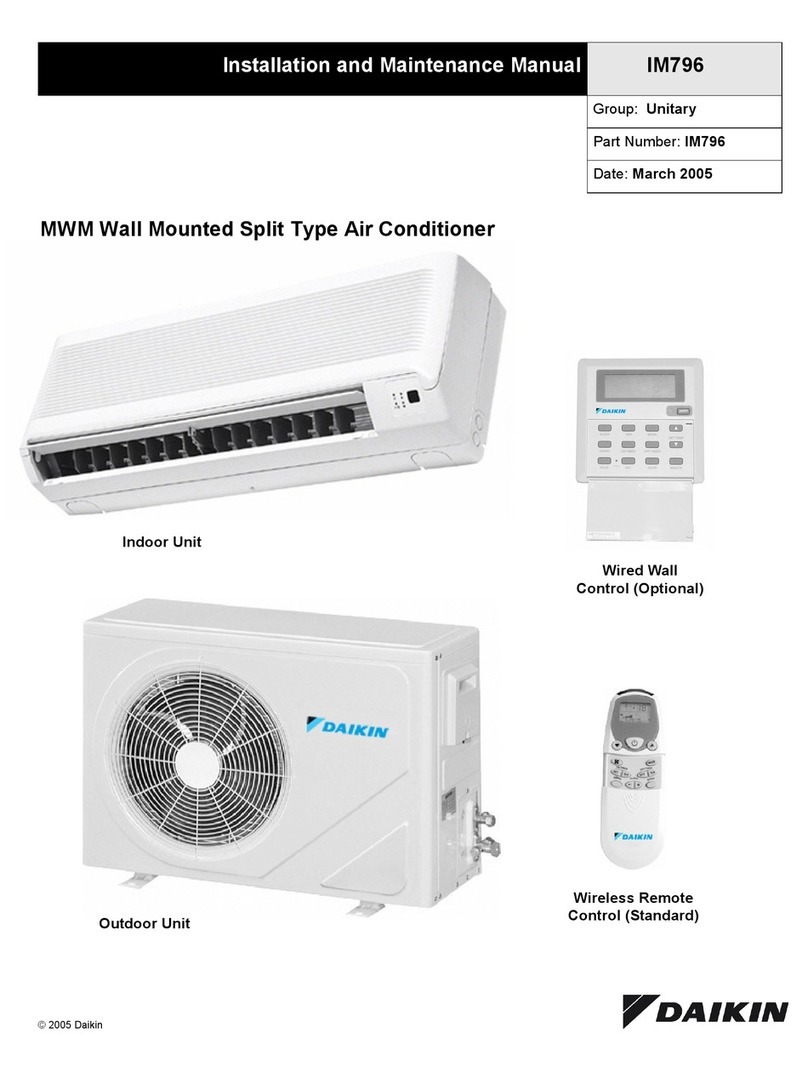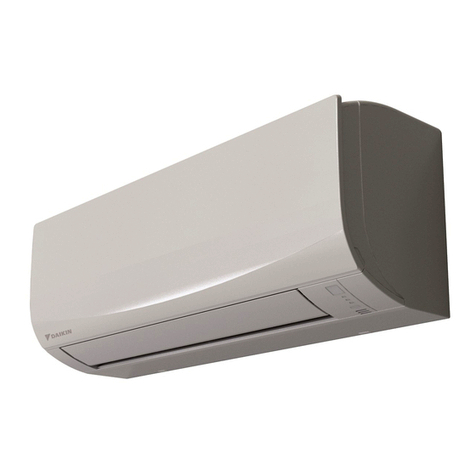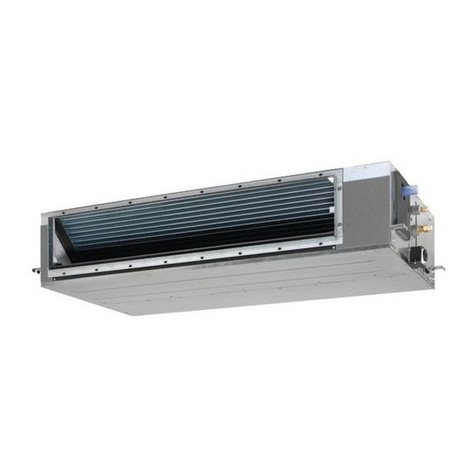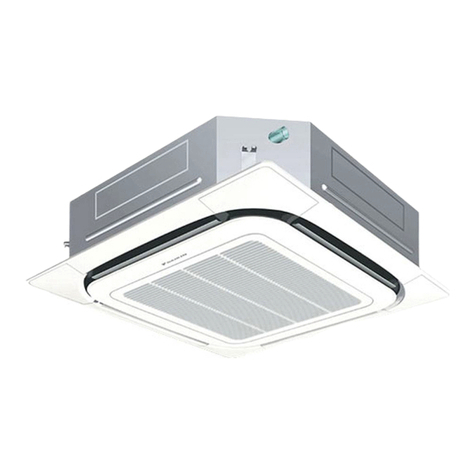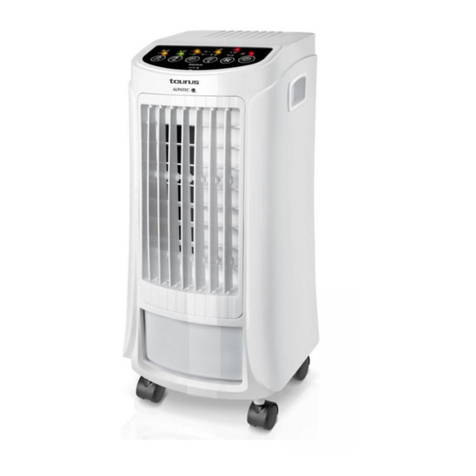4
ij
ij
ij
CAUTION
ij
Do not block the air inlets nor outlets. Impaired may result in performance or trouble.
ij
Do not sit on the outdoor unit, put things on the unit, or pull the unit. Doing so may cause accidents, such as falling or
toppling down, thus resulting in injury, product malfunctioning, or product damage.
ij
Do not place objects that are susceptible to moisture directly beneath the indoor or outdoor units. Under certain
conditions, condensation on the main unit or refrigerant pipes, air dirt or drain blockage may cause dripping,
resulting in fouling or failure of the object concerned.
ij
After prolonged use, check the unit stand and its mounts for damage. If they are left in a damaged condition, the unit
may fall and cause injury.
ij
To avoid injury, do not touch the air inlet or aluminium of the indoor or outdoor units.
ij
The appliance is not intended for use by unattended young children or persons. Impairment of bodily functions
and harm to health may result.
ij
Children should be supervised to ensure that they do not play with the unit or its remote controller. Accidental
operation by a child may result in impairment of bodily functions and harm health.
ij
Do not place items, such as spray cans, within 1m of the air outlet.
The spray cans may explode as a result of hot air from the indoor or outdoor units.
ij
Be careful not to let pets urinate on the air conditioner. Urination on the air conditioner may result in electric shocks or
ij
Do not wash the air conditioner with water, as this may result in electric shocks or
ij
Do not place water containers (vases, etc.) above the unit, as this may result in electric shocks or hazards if they should topple
over.
ij
To avoid oxygen depletion, ensure that the room is adequately ventilated if equipment such as a burner is used
together with the air conditioner.
ij
Before cleaning, be sure to stop unit operation and turn off the circuit breaker. Otherwise, an electric shock and injury may result.
ij
Only connect the air conditioner to the power supply circuit. Power supplies other than the one may
result in electric shocks, overheating and
ij
Arrange the drain hose to ensure smooth drainage. Imperfect drainage may cause wetting of the building, furniture, etc.
ij
Do not place objects in direct proximity of the outdoor unit and do not let leaves and other debris accumulate around
the unit. Leaves are a hotbed for small animals which can enter the unit. Once inside the unit, such animals can cause
malfunctions, smoke or if they come into contact with electrical parts.
ij
Do not place objects around the indoor unit.
Doing so may have an adverse on the performance, product quality, and life of the air conditioner.
Installation site
To install the air conditioner in the following types of environments, consult your dealer.
ij
Places with an oily environment or where steam or soot occurs.
ij
Salty environments such as coastal areas.
ij
Places where sulphide gas occurs such as hot springs.
ij
Places where snow may block the outdoor unit.
Be sure to follow the instructions below.
ij
The indoor unit is at least 1m away from any television or radio set (unit may cause interference with the picture or sound).
ij
The drain from the outdoor unit must be discharged to a place of good drainage.
Consider nuisance to your neighbours from noises
For installation, choose a place as described below.
ij
A place solid enough to bear the weight of the unit and which does not amplify the operation noise or vibration.
ij
A place from where the air discharged from the outdoor unit or the operation noise will not annoy your neighbours.
Electrical work
For the power supply, be sure to use a separate power circuit dedicated to the air conditioner.
System relocation
Relocating the air conditioner requires specialized knowledge and skills. Please consult your dealer if relocation
is necessary for moving or remodelling.
Do not give impact to the indoor and outdoor units, or otherwise product damage may result.
Do not sit or hang on the panel. The panel may fall, and injury or product malfunctioning may result.
Do not sway the panel. The panel may hit people or objects, and injury or property damage may result.
Do not let children play around the panel. Injury or property damage may result.
Do not pull the wires. The wires may be broken and the panel may fall, and injury or property damage may result.
Do not locate obstacles in the route. The panel may fall, and injury or property damage may result.
Do not bend or damage the wires. The wires may be broken and the panel may fall, and injury or property damage may result.
ij
ij
ij
ij
Do not put objects on the panel, or otherwise production malfunctioning may result.
Do not use an unstable stand at the time of operating or maintaining the air conditioner, or otherwise you may topple
over or injury youself.
Locate the remote controller in places out of reach of children. The wrong operation of the remote controller may result in injury.
ij
ij
ij
